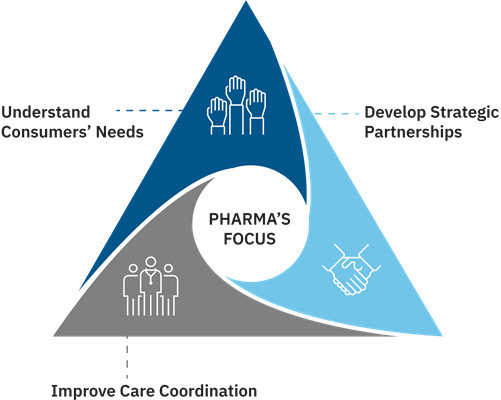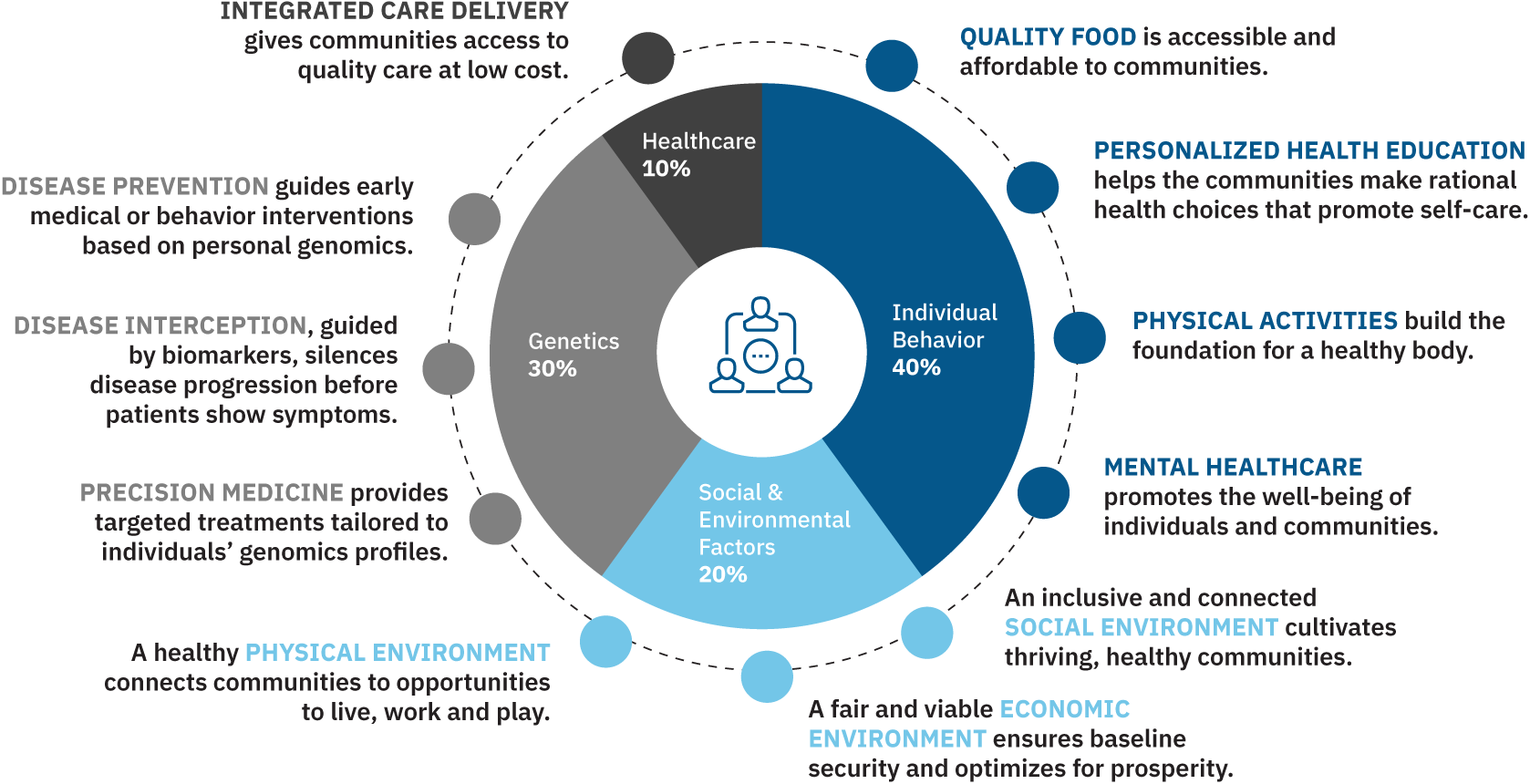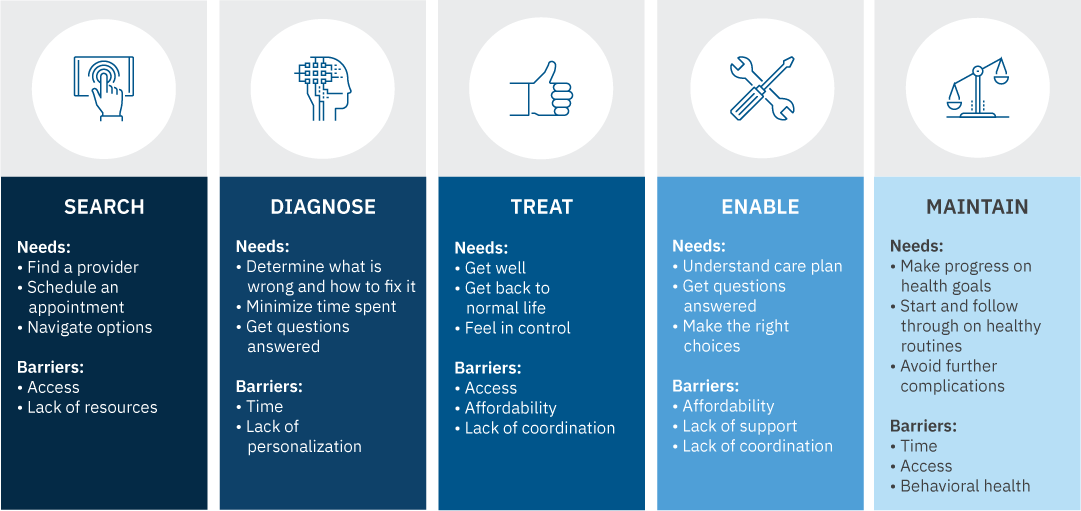In Brief
Today, cancer is the second leading cause of death (after cardiovascular diseases), and a 2020 report by the World Health Organization predicts that the number of new cases will grow by more than 10 million over the next two decades. By 2027, the global market size for oncology treatment is projected to be nearly US$400 billion, a compound annual growth rate of 11.6% over 2019 totals.
Key Takeaways
- Today’s healthcare consumer requires solutions tailored to their preferences, lifestyle and demographic.
- There are a number of opportunities for healthcare providers, community resources and payors to collaborate to improve care quality while realizing efficiencies.
- The inclusion of wraparound services that focus on improving health equity and addressing social determinants of health may go a long way toward bridging the care gap for underserved populations.
To curb these trends and improve patient outcomes, oncology providers and pharmaceutical developers are diligently innovating on traditional treatment delivery paradigms, with biosimilars, digital therapeutics, and cell and gene therapies entering the market rapidly. In fact, the global immune-oncology drug development pipeline has increased by 22% since 2019 and 233% since 2017. But these innovations alone will not be enough to ensure pharmaceutical’s longevity and viability in the coming years.
U.S. pharmaceutical developers lose about $250 billion annually as a result of medication nonadherence. Factoring in other behavioral, social or economic circumstances that can impact health outcomes, it becomes clear that more work must be done to improve current care models. And pharmaceutical companies must play a role.
To retain market share and continue to be competitive, forward-thinking life sciences companies are seeking opportunities to move beyond their traditional pharmacological offerings to provide additional services aimed at holistic patient care and wellness.
The global cancer burden is significant and increasing.”
- WORLD HEALTH ORGANIZATION
In Review: The Pharmaceutical Industry’s History of Negative Public Opinion
Over the last several years, the pharmaceutical industry has been confronted by a number of challenges including disruptive new entrants into their marketplaces, shifting consumer expectations and increased regulations. There has also been heightened global focus on price transparency and the cost-benefit ratio of prescriptions, especially in the United States where Americans annually spend nearly double what citizens of other developed nations do for their drugs. As it relates to oncology, that dynamic is perhaps even more apparent. The U.S. price of cancer treatments increased from $100 in 1965 to more than $10,000 today (adjusted for general inflation). Price hike scandals are all too common in the sector, as well.
What a company stands for (or doesn’t) is now just as important (if not more so) as the quality of the products or services they deliver.
At the same time, social movements like Black Lives Matter and #MeToo have highlighted new consumer standards for corporate social responsibility (CSR). What a company stands for (or doesn’t) is now just as important (if not more so) as the quality of the products or services they deliver.
For these reasons, among others, the pharmaceutical industry has been plagued for years by negative public opinion. In fact, in an annual study conducted by Gallup, the sector consistently ranks at the bottom of the list of 25 industries in terms of consumers’ perceptions. In 2019, the pharmaceutical industry came in dead last. In 2020, it came in second from the bottom, jumping seven percentage points, likely due, at least in part, to the rapid development of a COVID-19 vaccine. To say that the pharmaceutical industry’s reputation is in trouble with the general public is an understatement.
According to Lloyd’s, intangible assets like reputation can account for up to 85% of a business’s value. And, of the different types of intangible assets, reputation is the most important, potentially influencing stock price, business costs, customer retention, employee satisfaction and leadership turnover.
Beyond the Pill: Evolving Pharma’s Commercial Model to Embrace Population Health
To combat years of negative public perception, the pharmaceutical industry must work overtime to build back lost trust with consumers. For cancer treatment developers and the pharmaceutical industry at large, the best hope of improving their historically poor reputations may lie in a renewed commitment to improving population health.
To achieve this goal, pharmaceutical companies should look to understand target populations’ needs and how they can address them. This will require developing strategic collaborations with oncology providers, payors, community resources, and patients to enable holistic health coordination that improves oncological care.

Social Determinants of Health and Disparities in Cancer Care: Understanding Consumer Needs
True patient-centric care demands a holistic approach. Behavioral, social, environmental and genetic factors — or social determinants of health (SDOH) — make up 90% of that equation. These obstacles may make it difficult for individuals to access the care they need, take medications as prescribed, seek treatment or get a timely diagnosis — all of which can contribute to much poorer clinical outcomes, especially for cancer patients.
Social Determinants of Health
In oncology, in particular, these factors contribute to clear disparities of care between wealthy and underserved populations. And for this critical disease group, that could mean the difference between life and death. A Harvard University study found that individuals with a healthy lifestyle were 65% less likely to die as a result of a cancer diagnosis than their unhealthy peers.
Simultaneous shifts toward a focus on more value-based care suggests that healthcare leaders are recognizing that, in order to provide better care, they must develop patient-centric approaches that address traditional care delivery as well as the social determinants of health.
There are many opportunities for life sciences companies to play a role in population health management, but one of the most obvious is capturing population and consumer insights that can be used to tailor community health programs. Healthcare providers know that it requires a deep understanding of patients in order to influence their behaviors and impact a broad range of health drivers. By studying, identifying and targeting specific consumer segments, these companies can improve patients’ experiences and access within the current healthcare system or create entirely new experiences that support individual health journeys.
Strength in Numbers: Developing Strategic, Cross-Industry Partnerships
But how can the pharmaceutical industry move “beyond the pill” to develop more consumer-/patient-centric commercial models? The key to a shift toward a more holistic, patient-centric care model lies in cross-industry collaborations that aim to activate patients and engage communities.
Recent data suggests that healthcare providers are eager to partner with life sciences companies to break down siloes across the healthcare continuum and advance this important work. In a 2019 study conducted by Precision for Value, pharmaceutical and device manufacturers accounted for only 18% of current collaborations to address SDOH, but 82% of respondents were open to or actively pursuing these partnerships.
Potential Healthcare Continuum Collaborators
Wraparound Hub Services: Focusing on Intentional Care Coordination
By partnering with healthcare providers and community resources to design solutions with collective impact, pharmaceutical companies can leverage existing capabilities and insights to provide wraparound support services that improve early diagnosis, treatment efficiency, clinical outcomes and quality of life for cancer patients.
The creation of community-based, centralized models can facilitate care coordination across settings to help patients to more seamlessly manage care episodes as well as chronic diseases. These hub services have the potential to reduce care variation, minimize complications, engage patients, operationalize evidence-based care standards and encourage improved patient-provider communication, among other benefits. This consumer-centric model facilitates high-quality, lower-cost care for patients outside of acute care settings and minimize barriers to care while addressing a range of consumer needs across a variety of health circumstances. Sample services could include programs centered around wellness, housing, transportation, health literacy, health coaching, behavioral health, medication adherence, financial management, etc.
Expanded Community Offerings to Address Consumers’ Needs
A Call to Action
Life sciences companies have a responsibility to their consumers and their shareholders to make population health a priority. As the social determinants of health impact pharmaceutical product development and growth in many ways (clinical trial participation, product demand, medication adherence, etc.), there is a clear value proposition for these businesses to join other healthcare stakeholders in working toward the collective impact of true population health management.
After years of consistently poor public perception, the pharmaceutical industry has a long way to go to earn back the trust of its target consumers. Working to shift the conversation toward an industrywide focus on holistic community health is a good first step. As care models evolve and standardize to drive quality and outcomes, the pharmaceutical industry can and should play a role in developing the foundation necessary to support future iterations aimed at enabling and maintaining a lifetime of health for individuals and communities.
KEY TAKEAWAYS
-
Think differently.
Seek to understand the needs and barriers of target populations in order to provide tailored care solutions. -
Plan differently.
Actively collaborate with healthcare providers, community resources and payors to realize efficiencies of scale. -
Act differently.
Develop wraparound services that focus on improving health equity and addressing social determinants of health.



